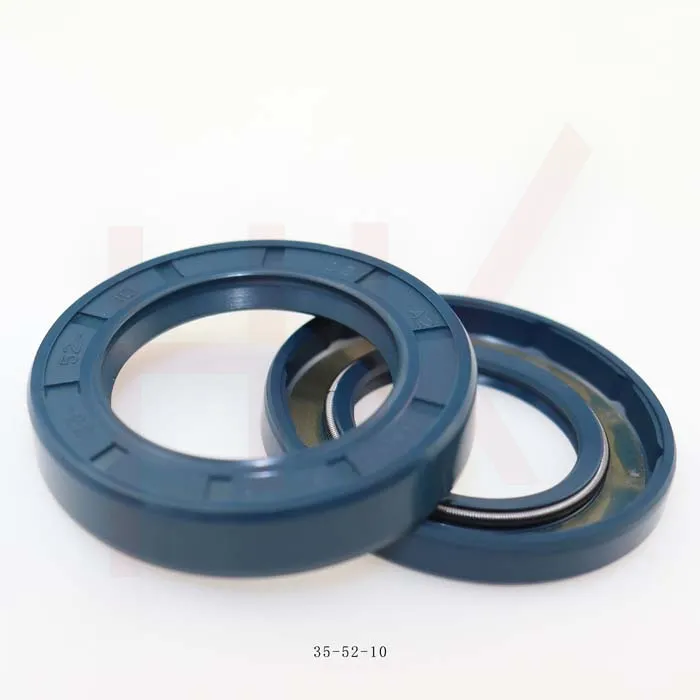ડીસેમ્બર . 16, 2024 09:01 Back to list
Understanding Seals in Hydraulic Cylinders for Optimal Performance and Longevity
Understanding Hydraulic Cylinder Seals Importance, Types, and Maintenance
Hydraulic cylinder seals are critical components in hydraulic systems, playing a vital role in ensuring efficient operation and longevity of machinery. Seals prevent hydraulic fluid from leaking out of the cylinder while also keeping contaminants from the outside environment from entering the system. This dual function is essential for maintaining pressure and ensuring the performance of hydraulic equipment. In this article, we will explore the various types of hydraulic seals, their importance, and tips for maintenance.
Importance of Hydraulic Cylinder Seals
Hydraulic systems are widely used across many industries, including manufacturing, construction, and automotive, due to their excellent power-to-weight ratio and precise control. The hydraulic cylinders in these systems rely heavily on seals to maintain performance. Without them, hydraulic fluid would leak, leading to inefficient operation, decreased capacity for force generation, and potentially catastrophic failures.
Seals also perform a protective function by keeping dirt, dust, and other contaminants from entering the hydraulic cylinder. Contaminants can cause wear and tear on the internal components, leading to increased maintenance costs and downtime. Therefore, choosing the right seal is crucial for optimal performance and reliability of hydraulic systems.
Types of Hydraulic Cylinder Seals
There are various types of seals used in hydraulic cylinders, each designed for specific applications and operating conditions. The main types include
1. Rod Seals These seals are found around the piston rod to prevent fluid from leaking out of the cylinder. They must withstand dynamic motion and offer excellent sealing capabilities despite variations in pressure and temperature.
2. Piston Seals Located on the piston itself, these seals help maintain hydraulic pressure within the cylinder. They are designed to handle high pressures and provide a firm seal that prevents fluid from bypassing the piston.
3. Buffer Seals These seals absorb impacts or pressure surges and protect other seals from damage. They act as a secondary line of defense, often placed behind the main rod or piston seals.
4. Guide Rings While not seals in the traditional sense, guide rings assist with the alignment of the piston and rod within the cylinder. They reduce friction and wear on both the seals and the cylinder itself.
5. Wipers Positioned at the end of the cylinder, wipers prevent dirt and contaminants from entering the hydraulic system. They work by scraping off any debris on the piston rod before it enters the cylinder.
hydraulic cylinder seals

Selecting the Right Seal
When selecting hydraulic cylinder seals, several factors must be considered, including the type of hydraulic fluid, temperature range, and operating pressure. It is crucial to choose seals made from materials compatible with the hydraulic fluid to prevent degradation and ensure a long service life.
Common seal materials include nitrile (Buna-N), polyurethane, and fluorocarbon (Viton). Each material has unique properties that make it suitable for different conditions. For example, Viton seals offer excellent chemical resistance and performance at high temperatures, making them ideal for harsh environments.
Maintenance of Hydraulic Cylinder Seals
Proper maintenance of hydraulic cylinder seals is essential to maximize their lifespan and maintain system efficiency. Here are some tips to keep in mind
1. Regular Inspection Routinely check seals for signs of wear, such as cracks, abrasions, or discoloration. Early detection of issues can prevent more extensive damage and costly repairs.
2. Clean Environment Keep the hydraulic system and surrounding environment clean to minimize the risk of contaminants entering the system. Use wipers and filters to aid in this effort.
3. Correct Installation Ensure that seals are installed correctly, following manufacturer guidelines. Improper installation can lead to leaks and premature failure.
4. Monitor Fluid Levels Regularly check hydraulic fluid levels and top them up as necessary. Running the system with low fluid levels can cause excessive wear on seals.
5. Temperature Control Maintain the hydraulic system within its recommended temperature range. High temperatures can lead to seal deterioration, while low temperatures can cause seals to become brittle.
Conclusion
Hydraulic cylinder seals play a crucial role in the efficiency and reliability of hydraulic systems. By understanding the different types of seals available, their selection criteria, and maintenance tips, operators can ensure that their hydraulic machinery operates smoothly and lasts longer. Investing time and resources in proper sealing practices is an investment in the overall health of hydraulic systems, leading to decreased downtime and enhanced productivity.
-
The Trans-formative Journey of Wheel Hub Oil Seals
NewsJun.06,2025
-
Graphene-Enhanced Oil Seals: Revolutionizing High-Pressure Oil Sealing
NewsJun.06,2025
-
Future of Hydraulic Sealing: Advanced Intelligent TCN Oil Seals
NewsJun.06,2025
-
Don’t Let a Broken TCV Oil Seal Ruin Your Day
NewsJun.06,2025
-
Bio-Inspired Dust Seals for Better Sealing Performance
NewsJun.06,2025
-
Biodegradable and Sustainable Hydraulic Seal Materials
NewsJun.06,2025
-
Top Oil Seal Solutions for Your Industrial Needs
NewsMay.22,2025
Products categories
















